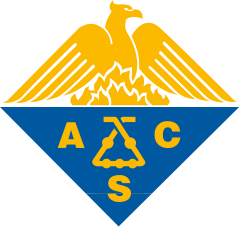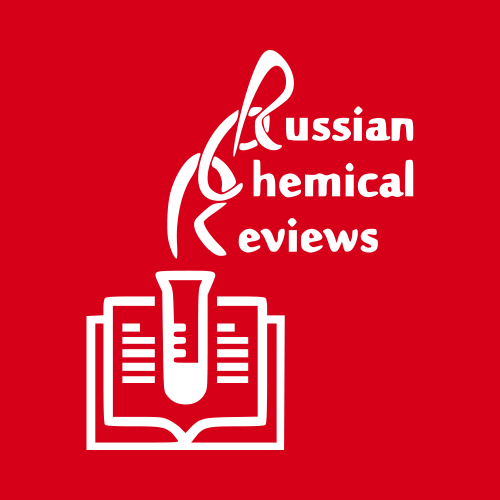AlphaFold, Artificial Intelligence (AI), and Allostery
Publication type: Journal Article
Publication date: 2022-08-17
scimago Q1
wos Q3
SJR: 0.742
CiteScore: 5.3
Impact factor: 2.9
ISSN: 15206106, 15205207, 10895647
PubMed ID:
35976160
Materials Chemistry
Surfaces, Coatings and Films
Physical and Theoretical Chemistry
Abstract
AlphaFold has burst into our lives. A powerful algorithm that underscores the strength of biological sequence data and artificial intelligence (AI). AlphaFold has appended projects and research directions. The database it has been creating promises an untold number of applications with vast potential impacts that are still difficult to surmise. AI approaches can revolutionize personalized treatments and usher in better-informed clinical trials. They promise to make giant leaps toward reshaping and revamping drug discovery strategies, selecting and prioritizing combinations of drug targets. Here, we briefly overview AI in structural biology, including in molecular dynamics simulations and prediction of microbiota-human protein-protein interactions. We highlight the advancements accomplished by the deep-learning-powered AlphaFold in protein structure prediction and their powerful impact on the life sciences. At the same time, AlphaFold does not resolve the decades-long protein folding challenge, nor does it identify the folding pathways. The models that AlphaFold provides do not capture conformational mechanisms like frustration and allostery, which are rooted in ensembles, and controlled by their dynamic distributions. Allostery and signaling are properties of populations. AlphaFold also does not generate ensembles of intrinsically disordered proteins and regions, instead describing them by their low structural probabilities. Since AlphaFold generates single ranked structures, rather than conformational ensembles, it cannot elucidate the mechanisms of allosteric activating driver hotspot mutations nor of allosteric drug resistance. However, by capturing key features, deep learning techniques can use the single predicted conformation as the basis for generating a diverse ensemble.
Found
Nothing found, try to update filter.
Found
Nothing found, try to update filter.
Top-30
Journals
|
1
2
3
4
5
6
|
|
|
International Journal of Molecular Sciences
6 publications, 4.8%
|
|
|
Journal of Molecular Biology
6 publications, 4.8%
|
|
|
Journal of Chemical Information and Modeling
4 publications, 3.2%
|
|
|
Current Opinion in Structural Biology
4 publications, 3.2%
|
|
|
Proteins: Structure, Function and Genetics
4 publications, 3.2%
|
|
|
Drug Discovery Today
3 publications, 2.4%
|
|
|
bioRxiv
3 publications, 2.4%
|
|
|
Nature Communications
3 publications, 2.4%
|
|
|
Journal of Chemical Theory and Computation
2 publications, 1.6%
|
|
|
Journal of Physical Chemistry B
2 publications, 1.6%
|
|
|
RSC Chemical Biology
2 publications, 1.6%
|
|
|
Protein Science
2 publications, 1.6%
|
|
|
IEEE Access
2 publications, 1.6%
|
|
|
International Journal of Biological Macromolecules
2 publications, 1.6%
|
|
|
Proceedings of the National Academy of Sciences of the United States of America
2 publications, 1.6%
|
|
|
Journal of the American Chemical Society
1 publication, 0.8%
|
|
|
Frontiers in Oncology
1 publication, 0.8%
|
|
|
Communications Biology
1 publication, 0.8%
|
|
|
Signal Transduction and Targeted Therapy
1 publication, 0.8%
|
|
|
Nucleic Acids Research
1 publication, 0.8%
|
|
|
Essays in Biochemistry
1 publication, 0.8%
|
|
|
BioMedInformatics
1 publication, 0.8%
|
|
|
Crystallography Reviews
1 publication, 0.8%
|
|
|
Methods
1 publication, 0.8%
|
|
|
ChemBioChem
1 publication, 0.8%
|
|
|
Viruses
1 publication, 0.8%
|
|
|
Heliyon
1 publication, 0.8%
|
|
|
Pharmaceuticals
1 publication, 0.8%
|
|
|
Cancer Cell International
1 publication, 0.8%
|
|
|
1
2
3
4
5
6
|
Publishers
|
5
10
15
20
25
30
35
40
|
|
|
Elsevier
36 publications, 28.8%
|
|
|
Springer Nature
21 publications, 16.8%
|
|
|
Wiley
13 publications, 10.4%
|
|
|
MDPI
12 publications, 9.6%
|
|
|
American Chemical Society (ACS)
10 publications, 8%
|
|
|
Cold Spring Harbor Laboratory
8 publications, 6.4%
|
|
|
Frontiers Media S.A.
4 publications, 3.2%
|
|
|
Royal Society of Chemistry (RSC)
3 publications, 2.4%
|
|
|
Taylor & Francis
2 publications, 1.6%
|
|
|
Institute of Electrical and Electronics Engineers (IEEE)
2 publications, 1.6%
|
|
|
Proceedings of the National Academy of Sciences (PNAS)
2 publications, 1.6%
|
|
|
Oxford University Press
1 publication, 0.8%
|
|
|
Portland Press
1 publication, 0.8%
|
|
|
Emerald
1 publication, 0.8%
|
|
|
Federation of American Societies for Experimental Biology (FASEB)
1 publication, 0.8%
|
|
|
Autonomous Non-profit Organization Editorial Board of the journal Uspekhi Khimii
1 publication, 0.8%
|
|
|
Bentham Science Publishers Ltd.
1 publication, 0.8%
|
|
|
IGI Global
1 publication, 0.8%
|
|
|
Annual Reviews
1 publication, 0.8%
|
|
|
American Association for the Advancement of Science (AAAS)
1 publication, 0.8%
|
|
|
IntechOpen
1 publication, 0.8%
|
|
|
5
10
15
20
25
30
35
40
|
- We do not take into account publications without a DOI.
- Statistics recalculated weekly.
Are you a researcher?
Create a profile to get free access to personal recommendations for colleagues and new articles.
Metrics
126
Total citations:
126
Citations from 2024:
81
(64%)
Cite this
GOST |
RIS |
BibTex |
MLA
Cite this
GOST
Copy
Nussinov R. et al. AlphaFold, Artificial Intelligence (AI), and Allostery // Journal of Physical Chemistry B. 2022. Vol. 126. No. 34. pp. 6372-6383.
GOST all authors (up to 50)
Copy
Nussinov R., Zhang M., Liu Y., Jang H. AlphaFold, Artificial Intelligence (AI), and Allostery // Journal of Physical Chemistry B. 2022. Vol. 126. No. 34. pp. 6372-6383.
Cite this
RIS
Copy
TY - JOUR
DO - 10.1021/acs.jpcb.2c04346
UR - https://doi.org/10.1021/acs.jpcb.2c04346
TI - AlphaFold, Artificial Intelligence (AI), and Allostery
T2 - Journal of Physical Chemistry B
AU - Nussinov, Ruth
AU - Zhang, Mingzhen
AU - Liu, Yonglan
AU - Jang, Hyunbum
PY - 2022
DA - 2022/08/17
PB - American Chemical Society (ACS)
SP - 6372-6383
IS - 34
VL - 126
PMID - 35976160
SN - 1520-6106
SN - 1520-5207
SN - 1089-5647
ER -
Cite this
BibTex (up to 50 authors)
Copy
@article{2022_Nussinov,
author = {Ruth Nussinov and Mingzhen Zhang and Yonglan Liu and Hyunbum Jang},
title = {AlphaFold, Artificial Intelligence (AI), and Allostery},
journal = {Journal of Physical Chemistry B},
year = {2022},
volume = {126},
publisher = {American Chemical Society (ACS)},
month = {aug},
url = {https://doi.org/10.1021/acs.jpcb.2c04346},
number = {34},
pages = {6372--6383},
doi = {10.1021/acs.jpcb.2c04346}
}
Cite this
MLA
Copy
Nussinov, Ruth, et al. “AlphaFold, Artificial Intelligence (AI), and Allostery.” Journal of Physical Chemistry B, vol. 126, no. 34, Aug. 2022, pp. 6372-6383. https://doi.org/10.1021/acs.jpcb.2c04346.

























